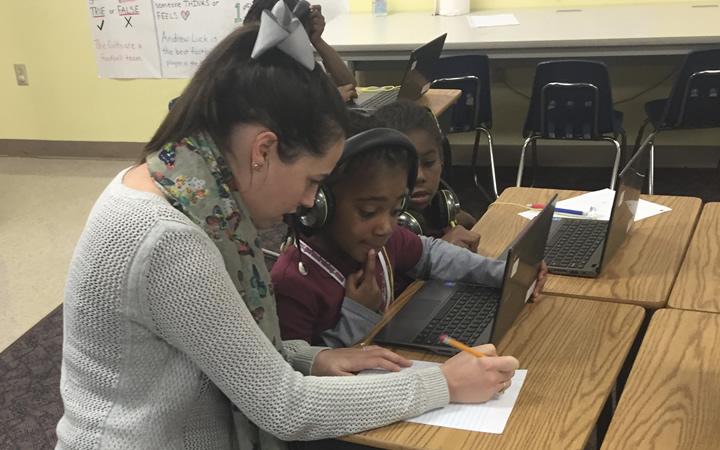So now you have met the team behind Higher-Powered Learning (HPL), but you may still be wondering, “what is Higher-Powered Learning?” If you’re reading this post, you probably understand the reference to the “higher power.” We used it in our name to communicate our primary commitment to “the art of leading the young to wholeness, in the image of Jesus Christ” (Blessed Basil Moreau, C.S.C.).
But the word “powered” has another important meaning in this context, which Fr. Nate Wills, Ph.D., explained in his 2015 dissertation (side note: as far as we know, Fr. Nate is the only person who has written his dissertation on blended learning in Catholic schools. Know of someone else? Let us know!). To begin his explanation of “powered learning,” Fr. Nate introduces the well-known Staker and Horn definition of blended learning:
“Blended learning is a formal education program in which a student learns (1) at least in part through online learning, with some element of student control over time, place, path, and/or pace; (2) at least in part in a supervised brick- and-mortar location away from home; (3) and the modalities along each student’s learning path within a course or subject are connected to provide an integrated learning experience” (p. 3).

Image from http://www.blendedlearning.org/learning
The first two parts of this definition–online and away from home–form the backbone of the popular understanding of blended learning. It is the third part of this definition, however, that distinguishes transformational blended learning programs from the typical cyber-sitting scenarios we see in so many schools.
If teachers are sending students to work on adaptive software programs during a rotational program but failing to reflect on the data from these programs and tailor their instruction to meet students’ individual needs, what they are doing would not actually qualify as blended learning. Fr. Nate encountered a number of classrooms in which this was the case while he was writing his dissertation, which motivated him to coin a new term that would more clearly distinguish between cyber-sitting and blended learning for practitioners:
“A form of learning in which students use adaptive software in a classroom setting to personalize their engagement with content, while teachers employ high-yield instructional practices and optimize their role by utilizing data from the software in regular and thoughtful ways to make targeted interventions.

This type of learning might be thought of as being “powered” by adaptive software because it personalizes instruction on the student side and gives teachers actionable, helpful, and timely performance data on the instructional side, while also freeing up teachers to do less of the mundane, low-level, and clerical work (read: less grading!) and more of the high-yield practices, like engaging with students one-on-one.
We recognize that some might claim that this definition is too narrow and focused to encompass the whole spectrum of blended learning. It is certainly the case that Horn & Staker’s definition covers a lot more ground when talking about models of blended learning that get much closer to cyberschooling, but we hope that this definition of “powered learning” is helpful in creating a shared understanding of what it means to thoughtfully use technology in the classroom setting.
Though we have not replaced the term “blended learning” with “powered learning” in our own work or discourse, we still think that the concept of “powered learning” emphasizes the critical features of the blended-learning programs we create and promote. In our schools, adaptive software programs are intended to empower teachers and students and to drive more personalized, higher-order learning than would occur otherwise. And, of course, because Catholic principles remain at the heart of this education program, our programs are, above all, higher-powered.
Stay tuned for more posts in the future about the connection between Catholic education and blended learning! And we want to hear from you: does this definition of “powered learning” encapsulate the key aspects of blended learning in your school?
Interested in learning more about blended learning in Catholic schools? Contact Elizabeth Anthony at or sign up to get our posts delivered directly to your inbox!
 Alliance for Catholic Education
Alliance for Catholic Education
